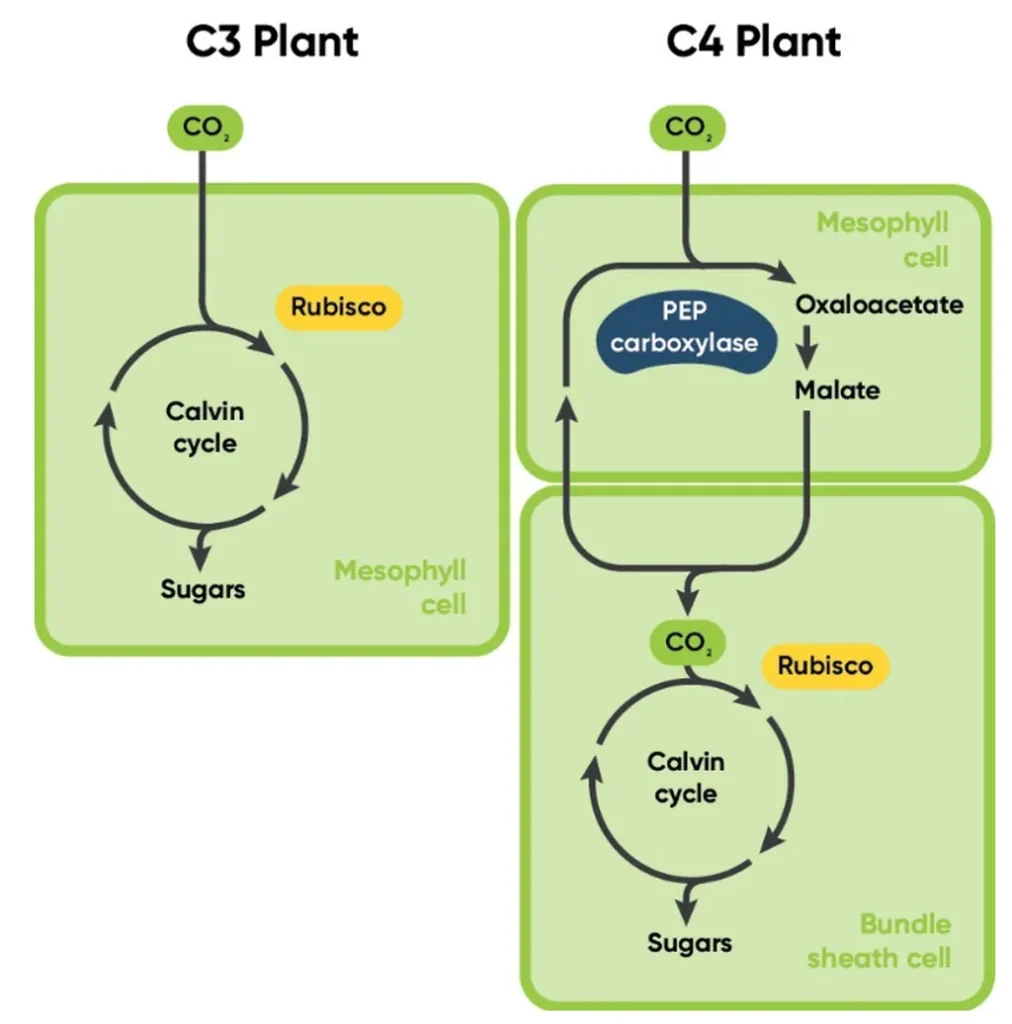In the vast and intricate world of plant biology, a recent study has shed new light on the evolutionary transition from C3 to C4 photosynthesis, a shift that has significant implications for the energy sector. Led by Ferit Kocacinar from the Faculty of Forestry at Kahramanmaraş Sütçü Imam University, the research focuses on the biochemical and structural differences between C3 cotyledons and C4 leaves in species of the Salsoloideae subfamily, a group of plants that includes the genera Salsola, Petrosimonia, and Cyathobasis.
The study, published in the journal Scientific Reports, reveals that these plants exhibit a fascinating duality: their cotyledons (the first leaves that appear from seed) operate on the C3 photosynthetic pathway, while their subsequent leaves switch to the more efficient C4 pathway. This transition is marked by significant changes in both the structure and biochemistry of the leaves.
Kocacinar and his team employed advanced techniques such as quantitative real-time PCR (qRT-PCR) and Western blotting to analyze the protein and transcript levels of key enzymes involved in photosynthesis and photorespiration. They found that enzymes crucial for the C4 pathway, such as phosphoenolpyruvate carboxylase (PEPC) and pyruvate orthophosphate dikinase (PPDK), were either absent or present in very low amounts in the C3 cotyledons. In contrast, these enzymes were abundant in the C4 leaves.
“Our results demonstrate a clear shift in the protein and transcript levels of enzymes required for the C4 pathway during the transition from C3 cotyledons to C4 leaves,” Kocacinar explained. “This shift is accompanied by a decrease in the levels of C3 and photorespiratory enzymes, highlighting the plant’s adaptation to optimize photosynthesis under different environmental conditions.”
The implications of this research extend beyond the realm of basic plant biology. Understanding the mechanisms behind the C3 to C4 transition could pave the way for the development of more efficient crops, which in turn could have a profound impact on the energy sector. C4 plants are known for their higher photosynthetic efficiency and water use efficiency, making them ideal candidates for bioenergy production.
“This study provides valuable insights into the evolutionary transition from C3 to C4 photosynthesis,” said Kocacinar. “By unraveling the biochemical and structural changes that occur during this transition, we can better understand how to engineer crops with enhanced photosynthetic efficiency, which could be a game-changer for the energy sector.”
The research also contributes to the broader understanding of plant evolution and adaptation. The findings suggest that the transition from C3 to C4 photosynthesis is a complex process involving multiple genetic and biochemical changes. This knowledge could be crucial for predicting how plants will respond to future environmental challenges, such as climate change.
As the world seeks sustainable solutions to meet its energy needs, the insights gained from this study could play a pivotal role in shaping the future of bioenergy. By harnessing the power of C4 photosynthesis, we may be able to develop crops that not only provide food but also serve as a renewable source of energy, contributing to a more sustainable and energy-efficient future.

